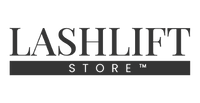Lash Lift Rods Vs. Lash Lift Shields
When it comes to performing a lash lift — a procedure that reshapes and lifts a person’s natural lashes — it’s important to choose the tool that will deliver the best results for your client. But many lash technicians have found themselves asking, which one is better: lash lift rods or lash lift shields?
While both are useful and even necessary, exactly which one you reach for will depend on a variety of factors. Let’s take a look at their individual purposes and discuss how rods and shields stack up against each other.
WHAT ARE LASH LIFT RODS?
Lash lift rods (also known as lash rods or perm rods) are cylindrical silicone or plastic devices that come in various sizes and shapes, catering to different lash lengths and curl preferences.
Since most artists are trained with lash rods, they have long been a classic option and a staple in lash artists’ kits, right alongside lash tint, lash extensions, and the like. Lash rods provide a progressive lift from the base of the lash, resulting in a natural lift look. With rods you have the option of adding a more dramatic curl, and they will also enable you to achieve a C-curl.
HOW TO USE LASH LIFT RODS
The process for placing a rod typically involves applying a specialized lifting solution to soften the lashes, followed by meticulously placing them onto the chosen rod size. You then use a gentle adhesive to secure the lashes onto the rod, ensuring they adhere smoothly for the best curling possible. After the lifting solution takes effect, the lashes adopt the shape of the rod, creating a voluminous look that will last for several weeks.
The versatility of lash lift rods ensures that lash technicians can accommodate a range of preferences, from a subtle lift to a more dramatic curl, and provide clients with personalized and flattering results.
WHAT ARE LASH LIFT SHIELDS?
Typically made of soft silicone, lash lift shields (also referred to as pads) are crucial tools in the lash lift process and come in various sizes to accommodate different eye shapes and lash lengths.
Lash shields offer a relatively large working space and will help you give your client an L-curl rather than a C-curl. Additionally, they are able to bring the lashes up and away from the client’s brow bone, making them a great option for clients with deep-set eyes, hooded eyes, or short lashes.
HOW TO USE LASH LIFT SHIELDS
The process begins with selecting an appropriate shield size that complements the client's natural eye shape and desired lift. Trimming a shield to better fit the individual’s specific eye size and shape will allow you to further tailor the results of the procedure.
After applying a specialized lifting solution to soften the lashes, you carefully adhere the lashes onto the chosen shield using a gentle adhesive. As the lifting solution takes effect, the lashes will adopt the shape of the shield, creating a customized curl that enhances the eyes for weeks.
LASH LIFT RODS VS. LASH LIFT SHIELDS: HOW DO THEY COMPARE?
When it comes to achieving the perfect lash lift, lash technicians have two essential tools at their disposal – lash lift rods and lash lift shields. Let's explore some key areas to learn where these tools are similar or different and to better understand how they create stunning lashes.
- Material: Typically made of plastic or silicone, lash lift rods offer a solid and cylindrical structure. Meanwhile, constructed from soft silicone, lash lift shields are flexible, contouring to the natural curve of the eyelid for a gentle lift.
- Shape and size: Available in various sizes and shapes, lash lift rods cater to different lash lengths and desired curls. While lash lift shields also come in diverse sizes, lash lift shields are better designed to accommodate various eye shapes, providing options for a customized lift.
- Application technique: The application process is similar for both. Lashes are meticulously placed onto the rod and secured with adhesive or adhered to the shield's surface, allowing them to follow the curvature of the eyelid. Both techniques result in a natural and lifted appearance.
- Adaptability: Rods may be more versatile in creating different curl intensities, from subtle lifts to more pronounced curls, depending on the rod size. By contrast, lash shields are more adaptable to various eye shapes, providing customization options and better accommodating individual preferences.
- Client comfort: Lash rods require very precise placement and can feel more rigid to clients during the treatment, whereas the soft and pliable nature of shields usually offers a more comfortable experience for clients.
SO, WHICH SHOULD YOU USE FOR YOUR CLIENTS?
Now that you better understand the similarities and differences between lash rods and lash shields, you’ll probably agree it’s a smart move to have both in your kit. This will allow you to achieve the best results for every client’s lash treatment needs.
Consider the length of your client’s lashes, the shape of their eyes, and the final results the client is looking for from their eyelash lift treatment. Also, be patient when it comes to answering their lash lift questions and walking them through the process beforehand so they know what to expect during and after the procedure.
Pro tip: Try recommending a lash tint with every lash lift treatment to enhance the client’s results and create a more complete look!
 Skip to content
Skip to content





































